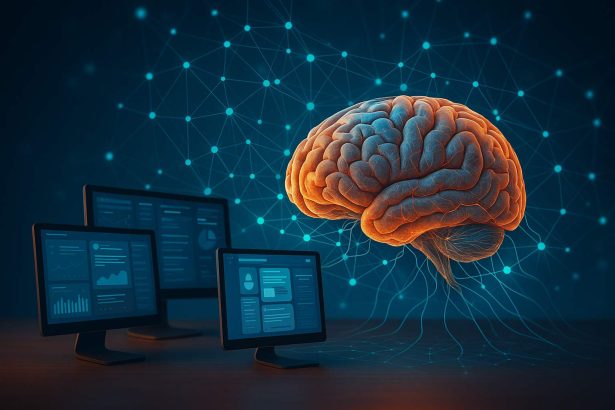Every day, invisible systems decide what you see, what you pay, and even how you are judged.
We call them algorithms — but in practice, they are black boxes.
They rank your feed, score your credit, screen your job application, and flag your behavior, often without your knowledge and almost never with your consent.
- What do we mean by a “black box” algorithm?
- Why so many algorithms are hard to audit
- Technical opacity: when complexity becomes a shield
- Data secrecy: the hidden half of every algorithm
- Business incentives: when transparency threatens profit
- Constant change: auditing a moving target
- Legal and regulatory gaps
- The human factor: “we didn’t know it would do that”
- Can we make algorithms more auditable?
- What individuals can do in the meantime
- Beyond the black box: toward accountable algorithms
After the Cambridge Analytica scandal, many people realized how powerful data-driven targeting could be.
But a deeper question remains: why are the algorithms behind these systems so difficult — sometimes almost impossible — to audit?
What do we mean by a “black box” algorithm?
A “black box” is a system whose inputs and outputs we can observe, but whose inner workings remain opaque.
With algorithms, this usually means we can see what we put in (data) and what comes out (a score, a ranking, a recommendation),
but we do not know exactly how the result was produced.
Sometimes the opacity is deliberate, protected by trade secrets or complex technical protections.
Other times, even the engineers who built the system cannot fully explain its behavior — especially when it relies on
modern machine learning and deep neural networks.
Why so many algorithms are hard to audit
There are several overlapping reasons why auditing powerful algorithms is difficult:
- Technical complexity – modern AI systems can involve millions or billions of parameters.
- Proprietary protection – companies treat their models as competitive secrets.
- Dynamic behavior – algorithms often change continuously as they learn from new data.
- Fragmented oversight – no single regulator sees the full picture of how a system is used.
Put together, these factors create an environment where algorithms can quietly shape human behavior while staying largely beyond scrutiny.
Technical opacity: when complexity becomes a shield
Many influential algorithms today are built using deep learning — a technique in which a model “learns” patterns from large amounts of data.
These models can be astonishingly accurate at recognizing patterns, but they are also notoriously difficult to interpret.
Even when the source code is available, an auditor may face:
- Layers of mathematical transformations that defy simple explanation
- Models trained on datasets that are themselves opaque or proprietary
- Interactions between variables that no human explicitly designed
In other words, transparency of code does not automatically mean transparency of logic.
The algorithm becomes a kind of technical fog — formally inspectable, but practically unexplainable.
Data secrecy: the hidden half of every algorithm
Algorithms are only half the story; the other half is data.
Two identical models trained on different datasets can behave in radically different ways.
Yet the data that powers high-impact systems is often locked away due to:
- Privacy laws limiting how personal information can be shared
- Corporate policies that treat data as a strategic asset
- Security concerns about revealing sensitive or proprietary information
This creates an auditing paradox.
To investigate whether an algorithm is biased or harmful, you often need access to the data.
But sharing that data may itself be illegal, risky, or commercially unacceptable.
Business incentives: when transparency threatens profit
Many of the algorithms that matter most — recommendation engines, ad-targeting systems, pricing models —
are central to the business models of large platforms and online services.
Their value lies in doing something competitors cannot easily copy.
Full transparency can reveal:
- How engagement is maximized, including through outrage or addiction
- How users are segmented and targeted based on sensitive traits
- How certain groups are prioritized or de-prioritized in rankings and visibility
For companies, exposing these mechanisms can mean reputational damage, regulatory risk, or competitive disadvantage.
As a result, they may provide only partial, high-level documentation — enough to reassure, but not enough to truly audit.
Constant change: auditing a moving target
Unlike traditional systems that are designed once and deployed for years,
modern algorithms are often adaptive.
They update continuously based on real-time behavior:
- Recommendation systems tweak results based on what users click
- Fraud detection models retrain as new attack patterns emerge
- Advertising algorithms constantly optimize for higher engagement
This dynamism makes auditing difficult because any findings can become outdated quickly.
An algorithm that appears fair today might become biased tomorrow as data shifts or optimization goals change.
Effective oversight would require not just a one-time audit, but ongoing monitoring — something few institutions are currently equipped to do.
Legal and regulatory gaps
Most legal frameworks were not built with adaptive, opaque algorithms in mind.
Traditional regulation focuses on products, contracts, and human decisions — not constantly evolving systems that operate at massive scale.
As a result, critical questions remain unclear:
- Who is responsible when an algorithm discriminates — the developer, the deployer, or the data provider?
- What level of explainability should be legally required for high-risk systems?
- How can regulators audit cross-border platforms that operate in many jurisdictions at once?
Several regions are now working on new rules for high-risk AI and automated decision-making,
but implementation will take time — and enforcement will be a long-term challenge.
The human factor: “we didn’t know it would do that”
A less visible barrier to auditing algorithms is cultural rather than technical.
Many teams building AI systems focus on performance and innovation, not on accountability.
Documentation, testing for bias, and long-term impact assessment are often secondary priorities.
In such environments, unexpected outcomes are treated as “bugs” or edge cases, rather than as ethical red flags.
When something goes wrong — discriminatory hiring, unfair credit scoring, harmful recommendations —
it is easy to say: “The model behaved in a way we didn’t anticipate.”
But from the perspective of the affected person, this is not a technical glitch; it is a failure of responsibility.
Can we make algorithms more auditable?
Despite all these challenges, there are emerging approaches aimed at making algorithms more accountable and auditable:
- Algorithmic impact assessments – structured evaluations performed before a system is deployed,
similar to environmental impact studies. - Independent audits – external experts review models, training data, and outcomes for bias,
discrimination, or harmful side effects. - Explainable AI (XAI) – techniques that provide human-readable explanations for automated decisions.
- Transparency reports – regular public disclosures of how algorithms are used, tested, and monitored.
None of these solutions is perfect, and many are still experimental.
But together, they mark a shift from blind trust in “smart systems” to a culture of justified trust.
What individuals can do in the meantime
While structural reforms are underway, ordinary users are not powerless.
You can:
- Question why you are seeing a particular piece of content, ad, or recommendation
- Use privacy tools, browser extensions, and alternative platforms that emphasize transparency
- Support organizations that advocate for digital rights, algorithmic fairness, and open research
- Stay informed about how data is collected, shared, and used to influence behavior
Awareness does not solve the problem on its own — but it is the first step toward meaningful change.
Beyond the black box: toward accountable algorithms
The algorithms that shape our lives are hard to audit not because it is impossible,
but because our technical, legal, and economic systems were not designed with accountability in mind.
The result is a digital environment where power hides behind complexity.
The legacy of Cambridge Analytica is a reminder that opaque systems can have profound political and social consequences.
The next phase of the digital era will be defined by whether we accept black-box algorithms as inevitable —
or demand that the systems governing our data, choices, and rights become visible, explainable, and open to challenge.
Takeaway: Algorithms may be complex, proprietary, and constantly evolving — but that cannot be an excuse for opacity.
If they influence access to information, opportunities, or democratic processes, they must be subject to scrutiny.
An ethical digital future depends on one simple principle: no system should have power over people without being answerable to them.







